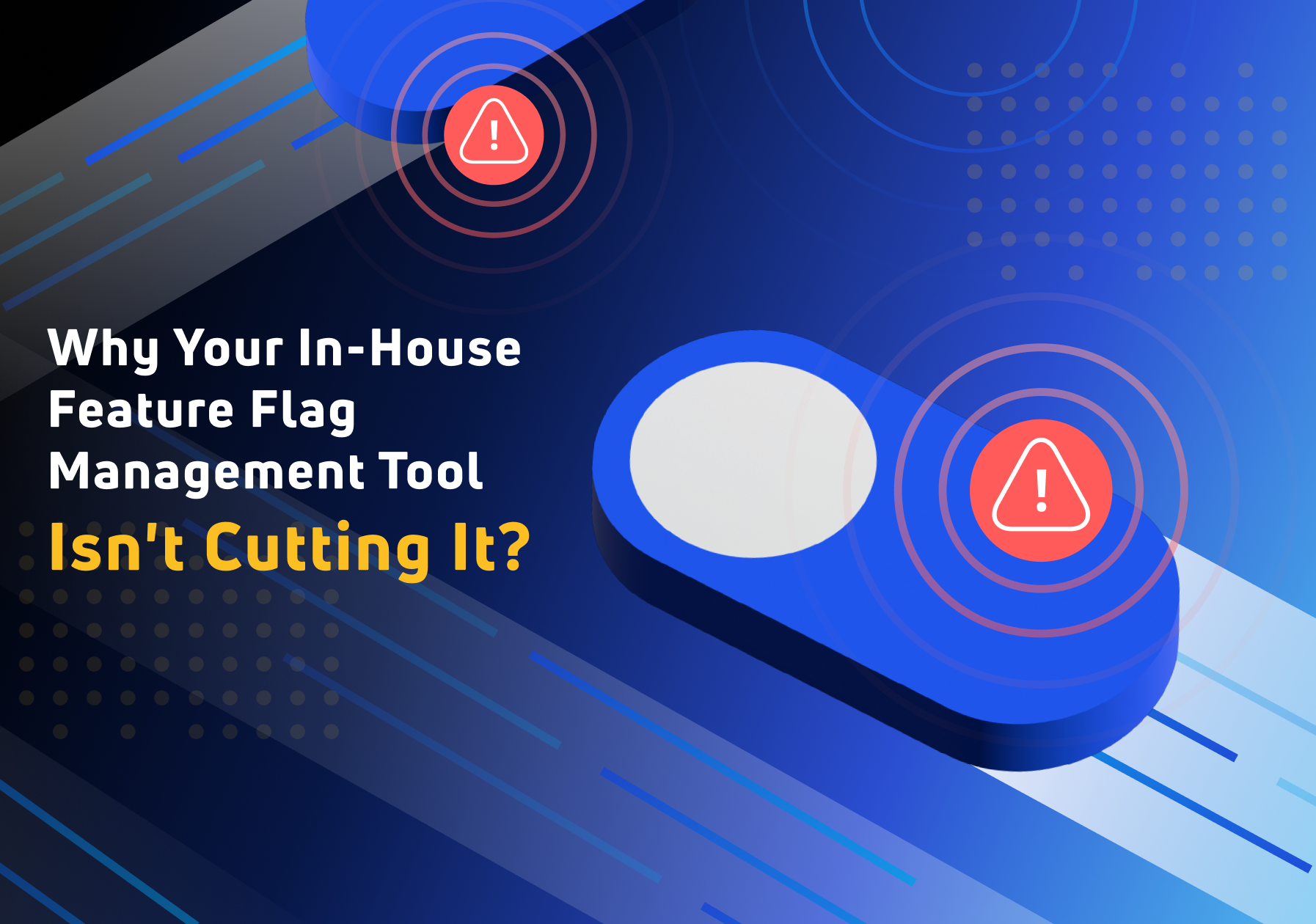
Why Your In-House Feature Flag Management Tool Isn't Cutting It
Madison Maher
7/20/2023
Why Your In-House Feature Flags Just Aren't Cutting It
As software developers, we know the importance of feature flagging for seamless feature rollouts and experimentation. Some teams opt to build their own in-house feature flag management tool, hoping to gain full control and customization. However, as we'll explore in this article, in-house solutions often fall short in meeting the evolving needs of modern dev teams.
So, let's dive in and uncover the limitations of in-house feature flag management tools ⬇️
Your in-house tool has limited scalability.
One significant drawback of in-house feature flagging tools is their inability to scale as your team and usage grow. As your product grows and your number of feature flags and users inevitably increase, your custom solution may struggle to handle the load.
Not to mention, a lot of in-house solutions aren’t built with proper maintenance and clean up mechanisms in mind. This means in-house solutions become complex and unruly as flag usage increases, and usually results in a very small number of devs who can actually be trusted to navigate your home grown solution.
Your engineers are experts at building whatever your core product is.
Our engineers are experts at building feature flags.
We’ve said it before, and we’ll say it again: we could ask our team of engineers to build a bicycle, and they could probably build it. But their bike would not be nearly as efficient or effective as a bike that a team of engineers who only builds bikes could make.
If you wouldn’t ask your engineering team to build you a bike, or a kitchen table, or even a piece of marketing software, why would you ask them to build you feature flags?
Building an effective feature flag management tool requires expertise in various areas, such as security, performance optimization, and usability. In-house teams may lack the specialized skills necessary to develop a robust and user-friendly tool.
Your in-house “feature flags” are merely feature toggles.
Feature toggles are not synonymous with full-fledged feature flag management tools. In-house tools often lack advanced features that can enhance your feature flag management workflow. Third party feature flags can support functionalities like targeting and segmentation, A/B testing, analytics, realtime updates, and more. If your in-house feature flags only allow you to toggle features on and off, you’re not actually using feature flags to their fullest potential.
You can’t rely on a support team, ChatGPT, or an external community of users to ask questions to.
(In other words, you have to figure everything out yourself.)
How many times a day do you hop on Google, ChatGPT, or any other existing resource to ask a question about your work? With in-house tools, the only knowledge source you have access to is your team. (We’re not saying they’re not smart, but if they don’t have the answers you need, there’s no one else to ask.)
You can’t keep up with the maintenance and technical debt from your in-house tool.
Developing and maintaining an in-house tool requires ongoing effort, diverting valuable engineering resources from core product development. Over time, the accumulated technical debt can become burdensome, making it difficult to keep up with evolving best practices and industry standards. Third-party tools often provide regular updates, bug fixes, and enhancements, alleviating the maintenance burden and allowing your team to focus on innovation.
You can’t build out all the necessary integrations you need.
So your in-house solution doesn’t mesh well with your workflow.
You may think building an in-house solution means you can build it in a way that integrates seamlessly with your tech stack, but building those integrations is harder than you might think. Third-party solutions, on the other hand, offer seamless integrations with popular development frameworks, CI/CD pipelines, and collaboration tools. This saves you valuable time and ensures a smooth workflow across your entire development ecosystem.
So, is it time for your team to graduate from your in-house tool?
While developing an in-house feature flag management tool may seem appealing at first, it often falls short in meeting the demands of modern software development. Limited scalability, ongoing maintenance, lack of specialized expertise, and missing advanced features are just some of the challenges you may encounter.
Instead, consider leveraging third-party solutions like DevCycle that are purposely built to address these limitations. With DevCycle, you gain a scalable, maintained, and feature-rich feature flag management tool that seamlessly integrates into your existing development workflow.
Get started with DevCycle today so that you can save time and focus on what you do best—building exceptional software.
Written By
Madison Maher